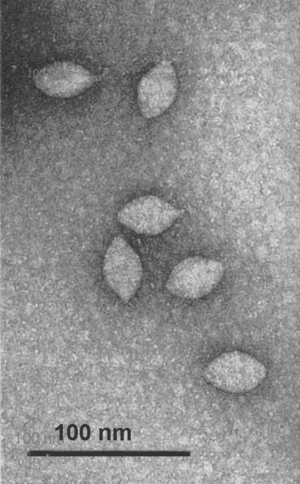Fuselloviridae: Difference between revisions
No edit summary |
No edit summary |
||
| Line 28: | Line 28: | ||
==Viral Ecology & Pathology== | ==Viral Ecology & Pathology== | ||
==References== | ==References== | ||
[http://www.ncbi.nlm.nih.gov/ICTVdb/ICTVdB/00.028.htm ICTV dB Descriptions] | [http://www.ncbi.nlm.nih.gov/ICTVdb/ICTVdB/00.028.htm ICTV dB Descriptions] | ||
Revision as of 18:57, 16 June 2006

Baltimore Classification
Higher order taxa
Viruses; dsDNA viruses, no RNA stage; Fuselloviridae
Genera
Fusellovirus
Description and Significance
Fuselloviridae is an archaeal virus. It infects Sulfolobus, growing at pH2 at 20ºC.
Genome Structure
The genome of a fuselloviridae is not segmented and contains a single molecule of circular, positively supercoiled, double stranded DNA. The complete genome is 15500 nucleotides long. (source: ICTV dB Descriptions)
Virion Structure of a Fuselloviridae
The virions of Fuselloviridae consist of an envelpe and a nucleocapsid. The capsid is enveloped. Virions are lemon-shaped; flexible and have protrusions that extend through the envelope. One pole has short tail-like fibers attached to it. The virions are 100 nm long and 60 nm in diameter.
The virion population is comprised such that some particles are of different sizes. Some particles are 1 % while some particels are larger and measure 300 nm in length. (source: ICTV dB Descriptions)
